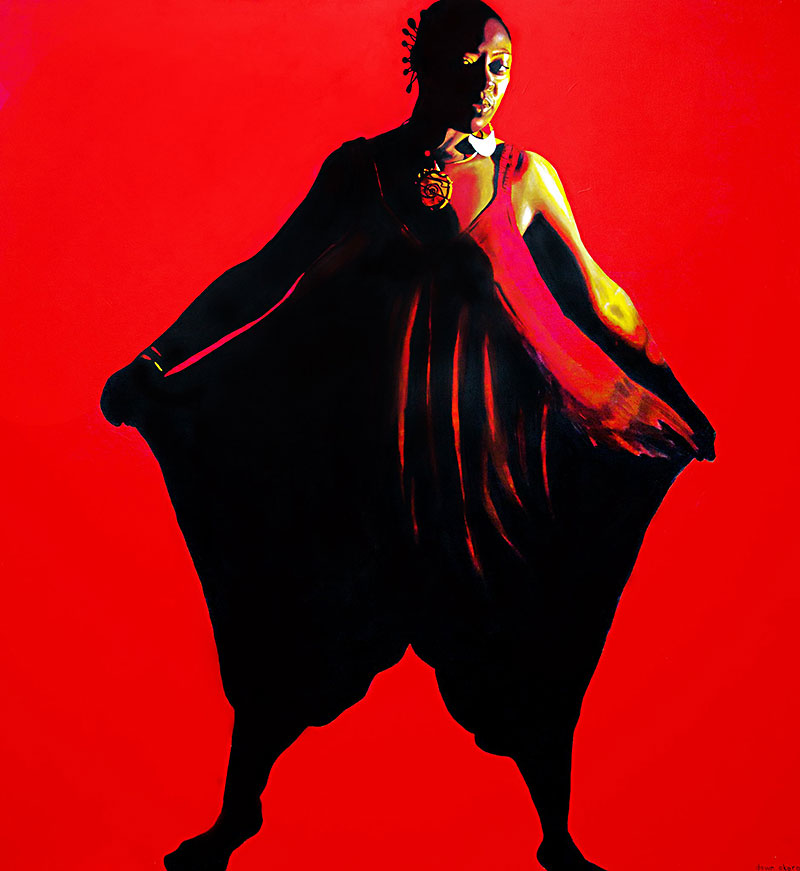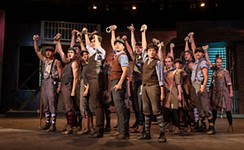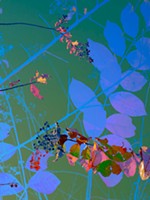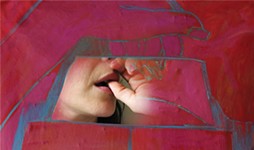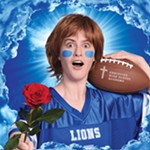"Dawn Okoro: Punk Noir" at the Carver Museum
The artist provides a corrective to preconceived notions of punk, exploring the ethos through black personal style
Reviewed by Melany Jean, Fri., May 11, 2018
Dawn Okoro's subjects all strike a commanding pose, but the strength of their style, and hers, in an exhibition called "Punk Noir" preclude the punk kiss of death, "poser." The solo show, which features about a dozen life-size acrylic paintings of local artists and creatives, is an exploration of black personal style as a punk ethos. "Here I focus on the punk aesthetic and attitude. I explore the idea of personal style as rebellion," Okoro writes in the accompanying pamphlet.
"Punk" comes loaded with iconography, some of which Okoro employs and some of which she seeks to uproot, but its spirit of antiestablishmentarianism and devil-may-care DIY is what she is really after. In centering black subjects and black style, she offers a corrective to preconceived notions of punk, which often ignore the black presence that has always been part of the subculture, was even foundational to it. She references this erasure in her use of copper leaf, blotted over a handful of figures in glimmering swoops. The medium's eye-grabbing luster also serves to renegotiate that erasure, reimagining and insisting on visibility, drawing from themes present in Afropunk and Afrofuturist concepts and works.
Okoro asks her subjects to respond to a prompt on style and authenticity, and their varying responses accompany their portraits. One such response mentions a stripping down to what is essential, an important facet of punk ideology, whose musicians sought to trim the fat off rock & roll and amplify raw, visceral impulses. As a look, and much of punk was about the look, this manifested at times as less is more, threadbare T-shirts and gnarled jeans, or, alternatively, more is more, studs and safety pins covering appendages and endless layers and textures of makeup, grime, and fabric.
A similar variety of texture and style is also present in Okoro's painting techniques and her subjects' various sensibilities. There is Ayana, an archaeologist and jewelry maker who made the cuffs she wears in the piece. Rendered in dramatic lighting, her skin looks luminous, hot to the touch, painted in sharp contrast against a deep red. The crook of her elbow, her cheekbone, and her shoulder are a pulsing yellow and a warm glow radiates across the rest of her body. In the next room is Qi Dada, whose open arms send her lavish purple robe billowing over her smooth, waxy body in casual elegance, only jewelry and a pair of briefs underneath, painted in a velvety sumptuousness that purrs against an orange background.
Compare these to Speak, in which local rapper and writer Megz Kelli wears a Bulls jersey and a cap turned backward over her long braids. She is shown flattened into matte planes that blur distinctions between her black pants, black jersey, black hair, and black hat, all set against a flat periwinkle background. Only her left eye is caught in the light.
Two pieces of wearable art, Denim Armor and Leather Armor, reveal something in title about Okoro's perception of style. It is protective, which is easy enough to see in the two jackets – denim and leather, respectively, both spiked, safety-pinned, patched, and painted. But Okoro seems to claim alongside them the protection of the dressing robe and the basketball jersey, the floral dress and the leather pant, the mohawk and the bucket hat.
"Dawn Okoro: Punk Noir"
George Washington Carver Museum and Cultural Center, 1165 AngelinaThrough July 21





